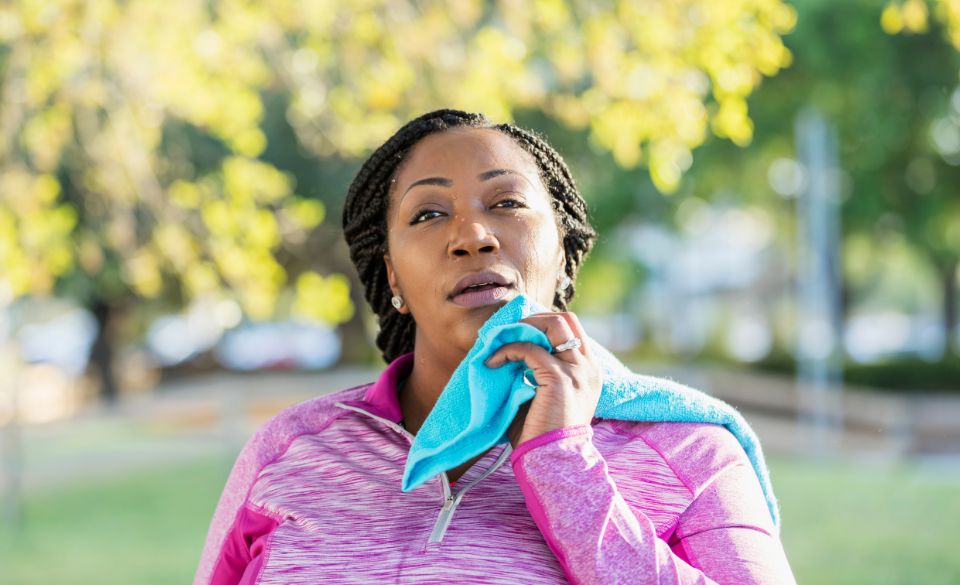
Face Swelling After Exercise: What’s Behind It?
Page Contents
Have you ever experienced facial swelling after a vigorous workout? If so, you’re not alone. Many people notice that their face appears puffy or swollen after intense exercise. This post-workout phenomenon might raise concerns and curiosity about its causes and implications. In this blog post, we’ll explore the factors that can contribute to face swelling after exercise and what you can do to alleviate it.
Fluid Retention and Blood Flow
One of the main reasons for facial swelling after exercise is fluid retention. During physical activity, your body heats up, and you start to sweat to cool down. Sweating is a natural response to regulate body temperature, but it can lead to fluid loss. In response to this fluid loss, your body may retain water to maintain fluid balance. This can result in facial puffiness or swelling, especially in the cheeks and around the eyes.
Additionally, during exercise, there is an increased blood flow to the working muscles and other organs involved in physical activity. This increased blood flow can cause temporary dilation of blood vessels in the face, which may contribute to facial swelling.
Impact of High-Intensity Exercise
High-intensity exercise, such as sprinting or intense interval training, can lead to facial swelling due to the buildup of lactic acid. Lactic acid is a byproduct of anaerobic energy production in muscles during intense exercise. When lactic acid accumulates, it can temporarily cause vasodilation (widening of blood vessels) and contribute to facial flushing and swelling.
Moreover, during high-intensity exercise, the body relies more on anaerobic metabolism, which generates higher levels of carbon dioxide and hydrogen ions. These byproducts can also contribute to facial swelling by affecting blood vessel dilation and blood flow.
Inflammation and Muscle Activation
Intense exercise, especially strength training, can lead to micro-tears in the facial muscles and tissues. The facial muscles play a significant role in expressions, and during exercise, they can become activated and stressed, leading to temporary swelling or puffiness.
Additionally, exercise-induced inflammation in the facial muscles may contribute to facial swelling. Inflammation is a normal part of the body’s healing process, and it helps repair damaged tissues and build stronger muscles. However, in the initial stages of muscle repair, the affected areas may become temporarily swollen.
Post-Exercise Hydration and Recovery
Proper hydration and post-exercise recovery play a crucial role in reducing facial swelling. After your workout, be sure to rehydrate by drinking plenty of water. Hydration helps maintain fluid balance and supports the body’s natural processes to flush out excess fluids.
Including foods rich in antioxidants and anti-inflammatory nutrients in your post-workout meal can aid in reducing inflammation and supporting the recovery process. Foods like leafy greens, berries, and healthy fats can provide these beneficial nutrients.
Additionally, consider incorporating post-workout facial massages or gentle facial exercises to stimulate lymphatic drainage and reduce facial swelling. These practices can help move excess fluid away from the face and alleviate puffiness.
Tips to Reduce Facial Swelling
While facial swelling after exercise is often temporary and harmless, you may still want to minimize its impact to feel more comfortable and confident. Here are some additional tips to help reduce facial swelling and enhance your post-workout recovery:
Cool Down Properly: After an intense workout, be sure to cool down gradually. This can help bring your heart rate and body temperature back to normal, promoting better fluid balance and reducing the likelihood of excessive facial swelling.
Elevate Your Head: Elevating your head slightly while resting or sleeping can help encourage proper fluid drainage and reduce facial puffiness. Consider propping up an extra pillow to elevate your head during sleep.
Avoid Alcohol and Caffeine: Alcohol and caffeine can contribute to dehydration, which may exacerbate facial swelling. Limit your consumption of these beverages, especially after exercise, and opt for hydrating fluids like water or herbal teas.
Use a Cold Compress: Applying a cold compress or a chilled facial roller to your face after exercise can help constrict blood vessels and reduce swelling. The cold sensation can also provide a refreshing feeling and soothe post-workout inflammation.
Consider Face Yoga: Face yoga involves performing specific exercises and massages for the facial muscles to promote relaxation, improve circulation, and reduce puffiness. Look for face yoga routines online or consult with a face yoga practitioner for guidance.
Monitor Your Salt Intake: High sodium intake can contribute to water retention and facial puffiness. Be mindful of your salt intake and choose whole, unprocessed foods over salty snacks and processed meals.
When to Seek Medical Advice
In most cases, facial swelling after exercise is a normal and temporary response to physical activity. However, there are instances where facial swelling may be a sign of an underlying medical condition. If you experience any of the following symptoms in addition to facial swelling, consider seeking medical advice:
– Severe or persistent facial swelling that does not improve with time
– Facial swelling accompanied by difficulty breathing or swallowing
– Swelling in other parts of the body, such as the hands, feet, or legs
– Hives or skin rash along with facial swelling
– Allergic reactions, such as itching or throat tightness
If you’re uncertain about the cause of your facial swelling or are concerned about any accompanying symptoms, consult a healthcare professional for a proper evaluation and diagnosis.
Face Swelling After Exercise – The Conclusion
Facial swelling after exercise is a common and usually harmless occurrence. Fluid retention, increased blood flow, the impact of high-intensity exercise, muscle activation, and inflammation are all factors that can contribute to this post-workout phenomenon.
While facial swelling is generally temporary and subsides as your body recovers, it’s essential to stay hydrated and support post-exercise recovery to minimize its intensity. Include nutrient-rich foods in your post-workout meals, and consider incorporating facial massages or exercises to aid lymphatic drainage.
Remember that each person’s body responds differently to exercise, and what works for one individual may not be the same for another. If facial swelling is persistent or accompanied by other concerning symptoms, consider consulting a healthcare professional to rule out any underlying medical conditions.
So, don’t let post-exercise facial swelling dampen your enthusiasm for staying active and pursuing your fitness goals. Embrace your post-workout glow, celebrate your accomplishments, and take pride in knowing that your body is growing stronger with each workout.



